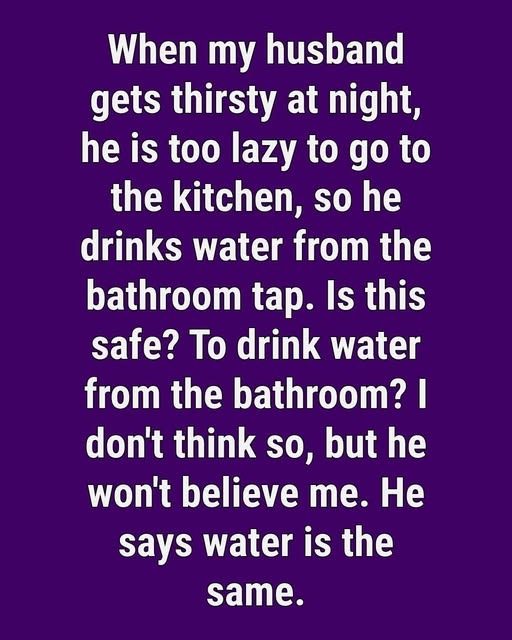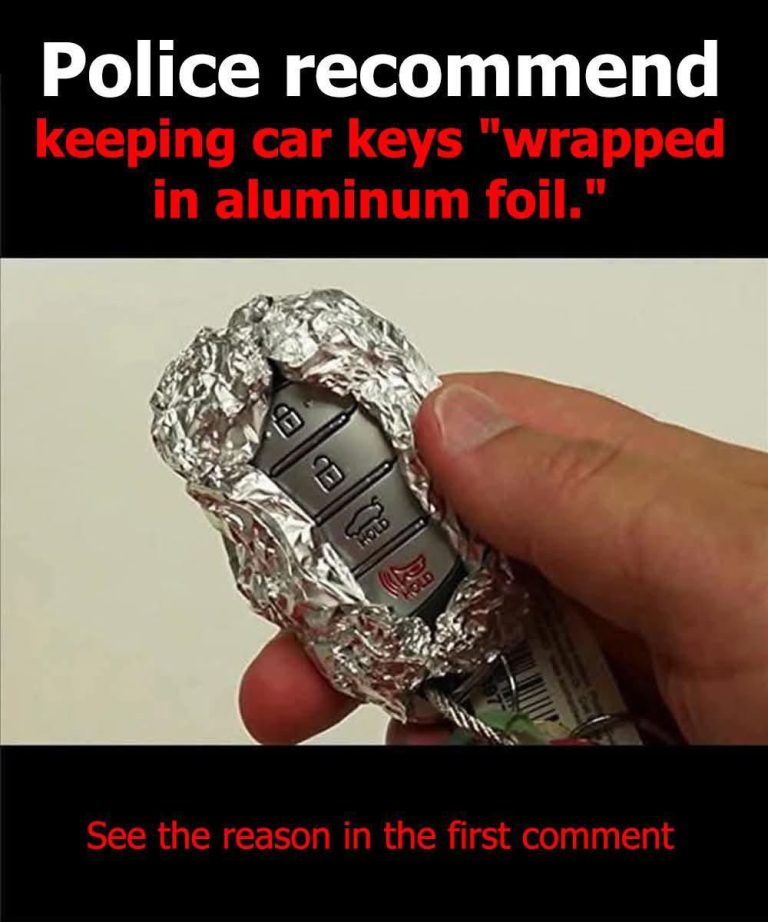
When my husband gets thirsty at night, he’s too lazy to go to the kitchen, so he drinks water from the bathroom tap.
I’ve told him countless times that it’s not the same as kitchen tap water, but he just laughs and says, “Water is water. It all comes from the same pipes.”
Still, something about that doesn’t sit right with me. The thought of drinking bathroom tap water just feels… wrong. I decided to find out once and for all whether it was actually safe—or if my instincts were correct.
The Difference Between Bathroom and Kitchen Tap Water
At first glance, it’s easy to assume all tap water in your home is identical. After all, it all comes from the same main supply, right?
Technically, that’s true. But the journey the water takes after entering your house can make a big difference.
In most modern homes, kitchen taps are usually connected directly to the main cold-water line, meaning the water you drink or cook with comes straight from the source—fresh, filtered, and under pressure.
Also Read : The Hidden Effects of Sleeping With a Fan on Your Throat — What You Should Know Before Bedtime
Bathroom taps, on the other hand, are often connected to a secondary system—a storage tank in the attic or an older section of plumbing. That means the water sitting in those pipes may not circulate as often. It could pick up minerals, bacteria, or even bits of residue from old pipes or tanks.
So, while it might look clear and taste fine, bathroom tap water isn’t always as clean or safe as it seems.
What Experts Say
According to water quality experts, the key difference lies in contamination risk. If your bathroom water supply comes from a cold-water storage tank rather than directly from the mains, it may be more susceptible to:
- Bacteria growth: Especially if the tank isn’t sealed properly or cleaned regularly.
- Lead or metal leaching: Older plumbing systems can release small amounts of metals into standing water.
- Stagnation: Water that sits in pipes overnight or for long periods can develop a stale taste and harbor microorganisms.
The kitchen faucet is where most people fill drinking glasses for a reason—it’s the most reliable source of clean, potable water in the home.
My Experiment: Proving My Point
One night, after my husband took another lazy sip from the bathroom tap, I decided to test his theory.
I filled two glasses—one from the kitchen, one from the bathroom—and set them side by side. The difference was subtle, but noticeable.
The kitchen water looked crystal clear. The bathroom water? A faint cloudiness, almost invisible unless you really looked. I tasted both. The kitchen water was crisp and fresh, while the bathroom one had a slightly metallic tang.
When I told him what I found, he rolled his eyes. “You’re imagining it,” he said.
So, I went one step further. I bought a home water testing kit.
Also Read : I Made a Wedding Dress for My Granddaughter – What Happened to It Hours Before the Ceremony Was Unforgivable
The results came back with slightly higher hardness and trace metals from the bathroom tap—nothing dangerous, but definitely not ideal for regular drinking.
That finally got his attention.
What You Can Do If You Drink Bathroom Tap Water
If you or someone in your home drinks from the bathroom tap, don’t panic—it’s usually not dangerous, but it’s not the healthiest habit either.
Here are a few tips to make it safer:
- Find out where your bathroom water comes from. If it’s directly connected to the main supply, you’re probably fine.
- Flush the tap first. Run the water for 30 seconds to clear out any stagnant water sitting in the pipes.
- Avoid drinking hot water. Hot water systems are more prone to bacterial growth and metal leaching.
- Use a filter. A small tap filter or jug filter can help reduce contaminants and improve taste.
- Clean or inspect water tanks regularly. If your home has a water tank, ensure it’s sealed and cleaned every few years.
A Funny Twist: His Late-Night Revelation
One night, around 2 a.m., I woke up to the sound of gagging from the bathroom. I rushed over, half-asleep, to find my husband spitting water into the sink.
“What happened?” I asked, trying not to laugh.
He pointed at the glass. “It tasted weird. Like… metal and soap.”
I couldn’t help but smirk. “Maybe it’s finally time to walk those extra ten steps to the kitchen?”
He sighed, defeated. “Fine. You win. But next time, I’m keeping a water bottle by the bed.”
Problem solved.
The Final Verdict
While bathroom tap water may not make you sick right away, it’s generally not recommended for drinking—especially if your home has old plumbing, storage tanks, or hard water issues.
Kitchen water is treated, circulated, and meant for consumption. Bathroom water is better suited for brushing your teeth or washing your face.
So next time you’re tempted to grab a midnight sip from the bathroom sink, remember: convenience isn’t worth the risk of what’s lurking in those pipes.
As for my husband? He now keeps a refillable bottle on his nightstand—and proudly claims it was his idea all along.



